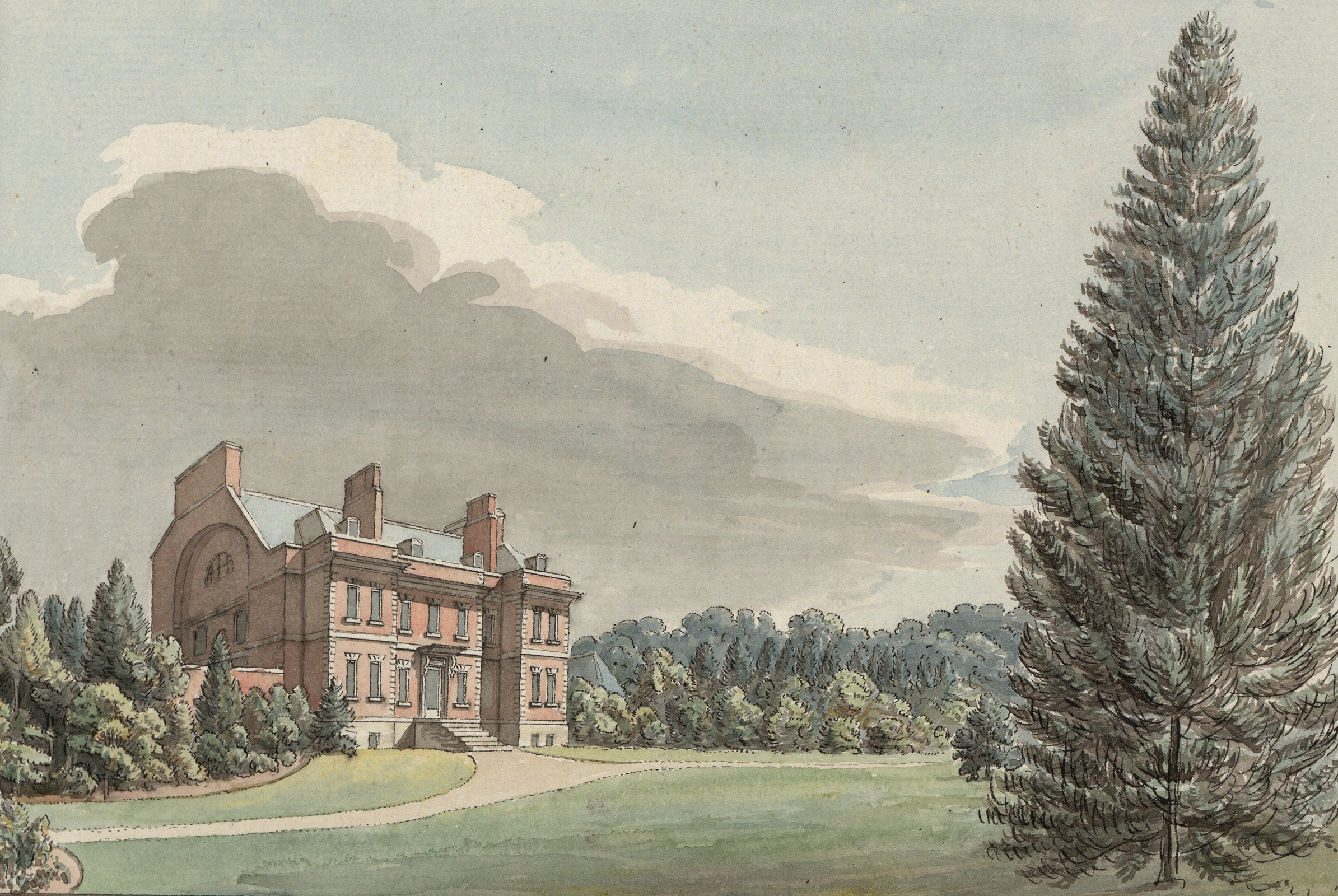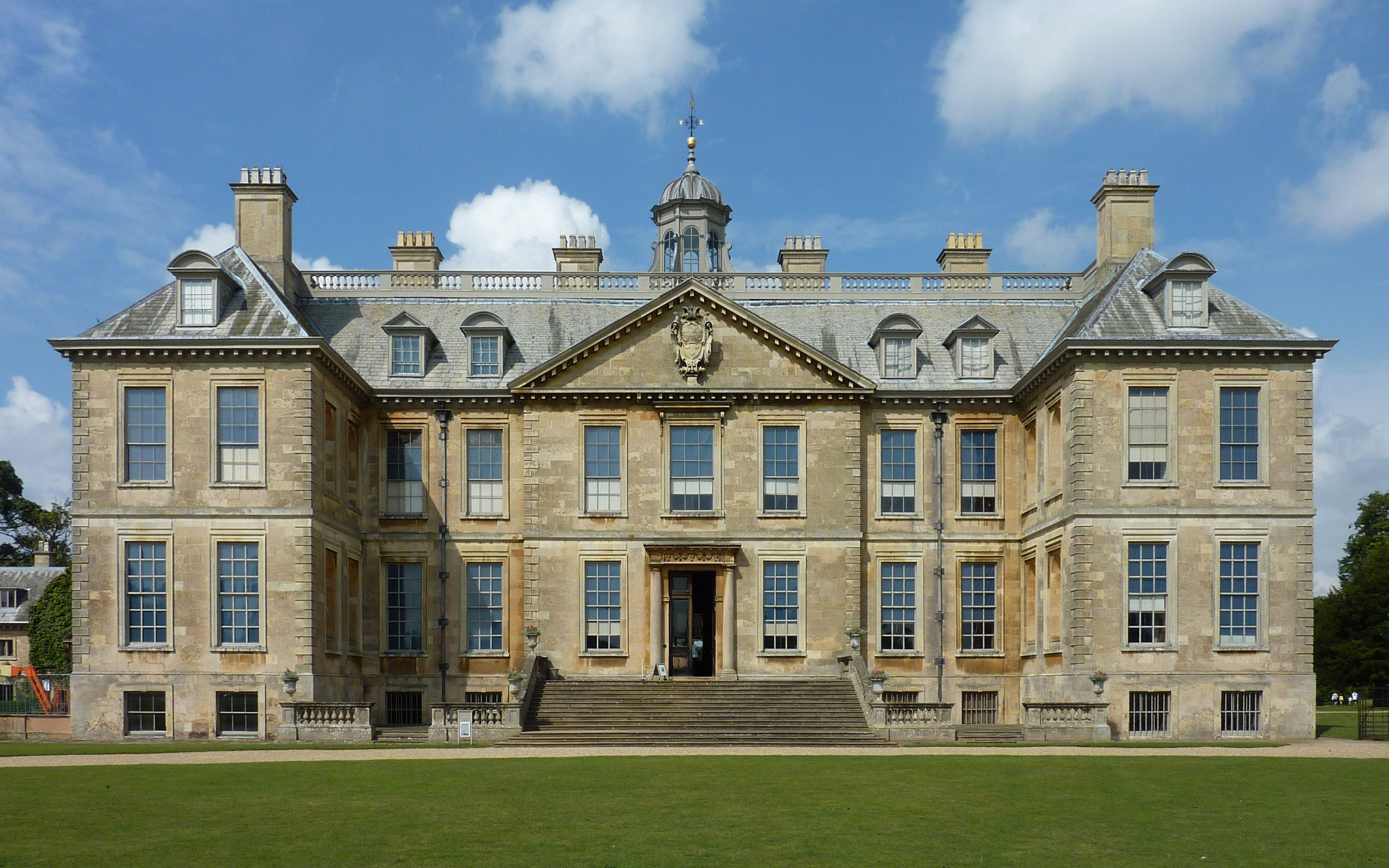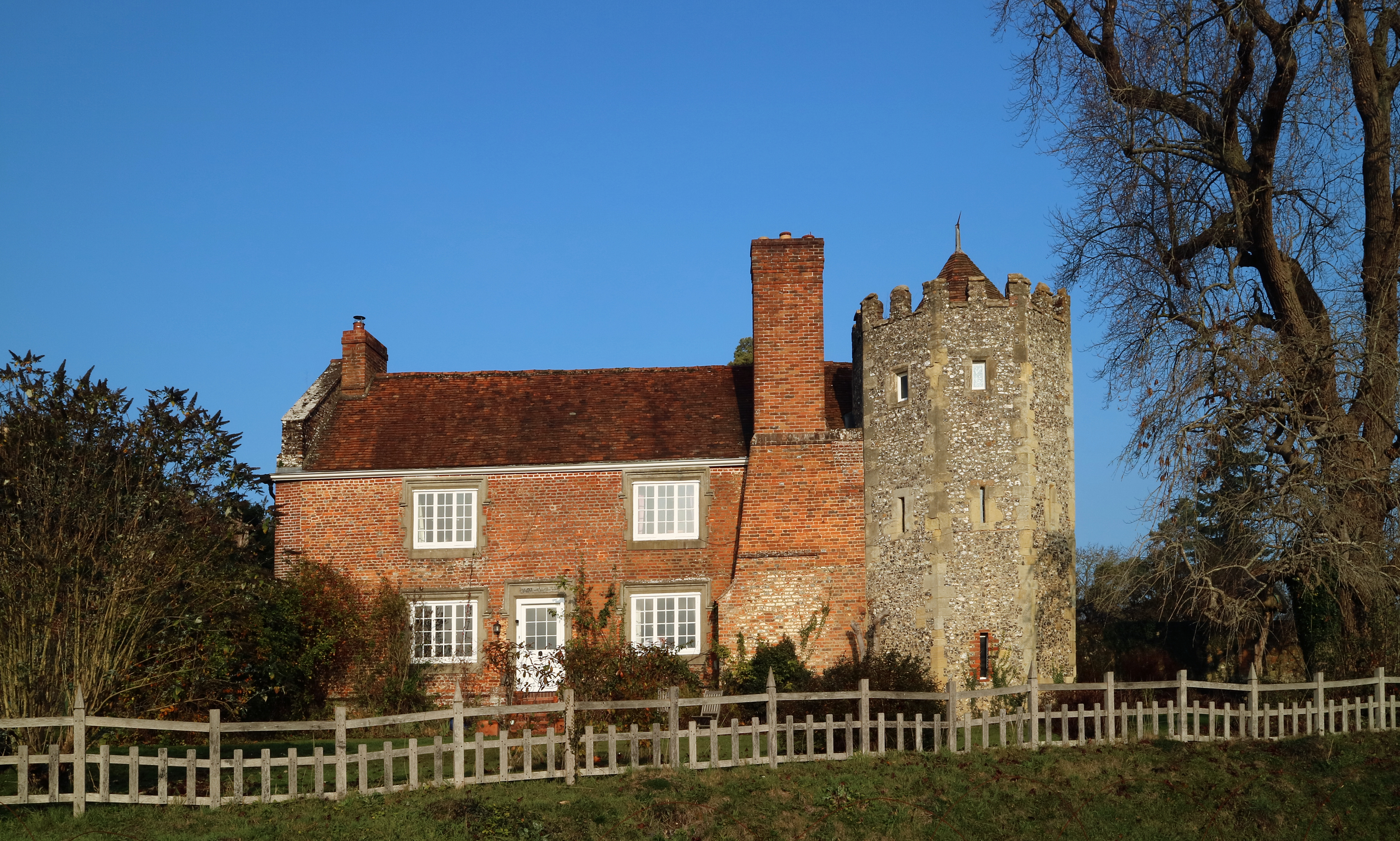|
Dudmaston Hall
Dudmaston Hall is a 17th-century country house in the care of the National Trust in the Severn Valley, Shropshire, England. Dudmaston Hall is located near the village of Quatt, a few miles south of the market town of Bridgnorth, just off the A442 road. History The property is a late 17th-century country mansion and an example of a traditional Shropshire country estate, in that it comprises the main hall, the landscaped gardens, parkland, managed woodlands, lakeside, farmland and the estate cottages, for example at Quatt, a model village designed by London architect John Birch in 1870 for the workers and tenants of the estate. Wolryche connection The Dudmaston estate has been in the Wolryche family or the barely related Wolryche-Whitmore family since 1403, when William Wolryche of nearby Much Wenlock acquired it by marriage to the heiress of the former owners, Margaret de Dudmaston. It is likely that the medieval house was replaced by a structure on the site of the present ... [...More Info...] [...Related Items...] OR: [Wikipedia] [Google] [Baidu] |
Severn Valley (England)
The Severn Valley is a rural area of the West Midlands region of England, through which the River Severn runs and the Severn Valley Railway steam heritage line operates, starting at its northernmost point in Bridgnorth, Shropshire and running south for 16 miles (26 km) to Ribbesford, a few miles south of Bewdley, Worcestershire in the Wyre Forest. The area is about 25 miles (40 km) due west of Birmingham. There is also use of this term to apply to areas around the River Severn as far south as Gloucester, and as far north as Ironbridge. To the north of Bridgnorth, the land to the sides of the river becomes much steeper, and the upstream part is known as Ironbridge Gorge. From Stourport-on-Severn south to Gloucester, the riverside has a much larger flood plain and loses its distinctive "valley" hillsides found a few miles north in Bewdley. To the south of Gloucester, it becomes the Vale of Berkeley and then the Severn Estuary. History The Severn Valley was ... [...More Info...] [...Related Items...] OR: [Wikipedia] [Google] [Baidu] |
Charles I Of England
Charles I (19 November 1600 – 30 January 1649) was King of England, Scotland, and Ireland from 27 March 1625 until his execution in 1649. He was born into the House of Stuart as the second son of King James VI of Scotland, but after his father inherited the English throne in 1603, he moved to England, where he spent much of the rest of his life. He became heir apparent to the kingdoms of England, Scotland, and Ireland in 1612 upon the death of his elder brother, Henry Frederick, Prince of Wales. An unsuccessful and unpopular attempt to marry him to the Spanish Habsburg princess Maria Anna culminated in an eight-month visit to Spain in 1623 that demonstrated the futility of the marriage negotiation. Two years later, he married the Bourbon princess Henrietta Maria of France. After his 1625 succession, Charles quarrelled with the English Parliament, which sought to curb his royal prerogative. He believed in the divine right of kings, and was determined to govern acco ... [...More Info...] [...Related Items...] OR: [Wikipedia] [Google] [Baidu] |
William Emes
William Emes (1729 or 1730–13 March 1803) was an English landscape gardener. Biography Details of his early life are not known but in 1756 he was appointed head gardener to Sir Nathaniel Curzon at Kedleston Hall, Derbyshire. He left this post in 1760 when Robert Adam was given responsibility for the entire management of the grounds. During his time at Kedleston he had started to alter the earlier formal nature of the park and had constructed the upper lake. Also during this time he married Mary Innocent, who was his servant and the daughter of a tailor. Together they had five sons and three daughters.Goodway, K "Emes, William (1729/30–1803)", rev., ''Oxford Dictionary of National Biography'', Oxford University Press, 2004accessed 30 January 2007/ref> His son John Emes who was born in 1762 was a successful engraver and silversmith. After leaving Kedleston he moved to live in Bowbridge House, (Not Bowbridge Fields farm as previously thought) Mackworth. This was later the h ... [...More Info...] [...Related Items...] OR: [Wikipedia] [Google] [Baidu] |
Matthew Griffith
Matthew Griffith (1599? – 1665) was an English clergyman. Early life and education Griffith was born in London in or before 1599. He studied at Brasenose College, Oxford, later moving to Gloucester Hall, where he graduated with a Bachelor of Arts in February 1619. He continued his studies at Christ's College, Cambridge, gaining a Master's in 1621. Church career In 1624, Griffith became the rector of St Mary Magdalen Old Fish Street in London, possibly through his connection to John Donne. In April 1640, he was also made rector of St Benet Sherehog. With the onset of the Civil War in 1642, Griffith regularly preached against the Parliamentarians who opposed the King, including in his criticism any who offered material or financial support to them. This led to his arrest on 5 November, and he was imprisoned at Newgate and then at Lord Petre's house, which had been seized by anti-Royalist forces. Griffith's property was also seized in early 1643, under an order issued by t ... [...More Info...] [...Related Items...] OR: [Wikipedia] [Google] [Baidu] |
Chelmarsh
Chelmarsh is a village and civil parish in the English county of Shropshire. It lies 4 miles south of Bridgnorth on the B4555 road to Highley. Notable buildings The main feature of the village St. Peter's church. This is an example of the Decorated style and is built on the site of a Norman church, parts of the original building can still be seen. Other notable buildings include the former Chelmarsh Church of England Primary School, built in 1850 which closed its curriculum doors in July 2002; the building has since been converted into a dwelling. Another is Astbury Hall; a stately home with 320 acres. In 1889 it was destroyed by a fire but rebuilt in 1891. Up until 2017 it was the home to Judas Priest star K.K. Downing who transformed it into a golf course. Community It has one pub: 'The Bulls Head' in the main village, and the 'Unicorn' in the hamlet of Hampton, and is also home to Chelmarsh Sports & Social Club and Chelmarsh Parish Hallwww.chelmarshparishhall.co.uk. ... [...More Info...] [...Related Items...] OR: [Wikipedia] [Google] [Baidu] |
Severn
, name_etymology = , image = SevernFromCastleCB.JPG , image_size = 288 , image_caption = The river seen from Shrewsbury Castle , map = RiverSevernMap.jpg , map_size = 288 , map_caption = Tributaries (light blue) and major settlements on and near the Severn (bold blue) , pushpin_map = , pushpin_map_size = 288 , pushpin_map_caption= , subdivision_type1 = Country , subdivision_name1 = England and Wales , subdivision_type2 = , subdivision_name2 = , subdivision_type3 = Region , subdivision_name3 = Mid Wales, West Midlands, South West , subdivision_type4 = Counties , subdivision_name4 = Powys, Shropshire, Worcestershire, Gloucestershire , subdivision_type5 = Cities , subdivision_name5 = Shrewsbury, Worcester, Gloucester, Bristol , length = , width_min = , width_avg = , width_max = , depth_min = , depth_avg = ... [...More Info...] [...Related Items...] OR: [Wikipedia] [Google] [Baidu] |
Belton House
Belton House is a Grade I listed country house in the parish of Belton near Grantham in Lincolnshire, England, built between 1685 and 1688 by Sir John Brownlow, 3rd Baronet. It is surrounded by formal gardens and a series of avenues leading to follies within a larger wooded park. Belton has been described as a compilation of all that is finest of Carolean architecture, the only truly vernacular style of architecture that England had produced since the Tudor period.Nicolson, 148. It is considered to be a complete example of a typical English country house. For about three centuries until 1984, Belton House was the seat successively of the Brownlow family, which had first acquired land in the area in the late 16th century, and of its heirs the Cust family (in 1815 created Earl Brownlow). Despite his great wealth Sir John Brownlow, 3rd Baronet, chose to build a comparatively modest house rather than one of the grand Baroque palaces being built by others at the time. The ... [...More Info...] [...Related Items...] OR: [Wikipedia] [Google] [Baidu] |
Francis Smith Of Warwick
Francis Smith of Warwick (1672–1738) was an English master-builder and architect, much involved in the construction of country houses in the Midland counties of England. Smith of Warwick may refer also to his brothers, or his son. Architectural work The county town of Warwick had been devastated by a fire in September 1694, and the projects involved in its rebuilding gave the Smith brothers their first prominence, which they retained for decades by a universal reputation for scrupulous honesty and competence. Howard Colvin, plotting their known commissions on a map, remarked that nearly all of them lay within a fifty-mile radius of their mason's yard, the "Marble House" in Warwick. The antiquary the Hon. Daines Barrington noted in 1784, after viewing several Smith of Warwick houses, found "all of them convenient and handsome" despite changes in taste. Colvin summarised the elements by which a Smith house is easily recognizable: three storeys, with the central three bays empha ... [...More Info...] [...Related Items...] OR: [Wikipedia] [Google] [Baidu] |
Dower House
A dower house is usually a moderately large house available for use by the widow of the previous owner of an English, Scottish or Welsh estate. The widow, often known as the "dowager", usually moves into the dower house from the larger family house on the death of her husband if the heir is married, and upon his marriage if he was single at his succession. The new heir occupies the now vacated principal house. The dower house might also be occupied by an elder son after his marriage, or simply rented to a tenant. Examples The British royal family maintains a dower house in London as well as one in the country. Well-known royal dower-houses in London have included Clarence House, Marlborough House, and (for a time during the 18th century) Buckingham Palace (then known as "Buckingham House"). Rappaport, Helen (2003)''Queen Victoria: A Biographical Companion'' p. 83. ABC-CLIO, Inc. Frogmore House has served as Windsor Castle's dower house. The Dukes of Devonshire kept Har ... [...More Info...] [...Related Items...] OR: [Wikipedia] [Google] [Baidu] |
John Wolryche
John Wolryche (c.1637–1685) was a lawyer and politician of landed gentry background who represented Much Wenlock (UK Parliament constituency), Much Wenlock in the House of Commons of England in two parliaments of Charles II of England, Charles II. He was a moderate Whigs (British political party), Whig, opposing the succession of James II of England, James II but avoiding involvement in conspiracies. Background and education John Wolryche was the 5th son, but 3rd surviving son, ofHenningWolryche, John (c.1637–85), of Dudmaston Hall, Quatt, Salop.– Authors: J. S. Crossette / John. P. Ferris *Thomas Wolryche of Dudmaston Hall, near Bridgnorth, a substantial landowner in south and east Shropshire.Thrush and FerrisWolryche (Woolridge), Thomas (1598–1668), of Dudmaston, Salop.– Author: Simon Healy. Initially a client of his uncle, Edward Bromley, Wolryche had been MP for Much Wenlock. He became an ardent Cavalier, royalist in the English Civil War and was military governor ... [...More Info...] [...Related Items...] OR: [Wikipedia] [Google] [Baidu] |







